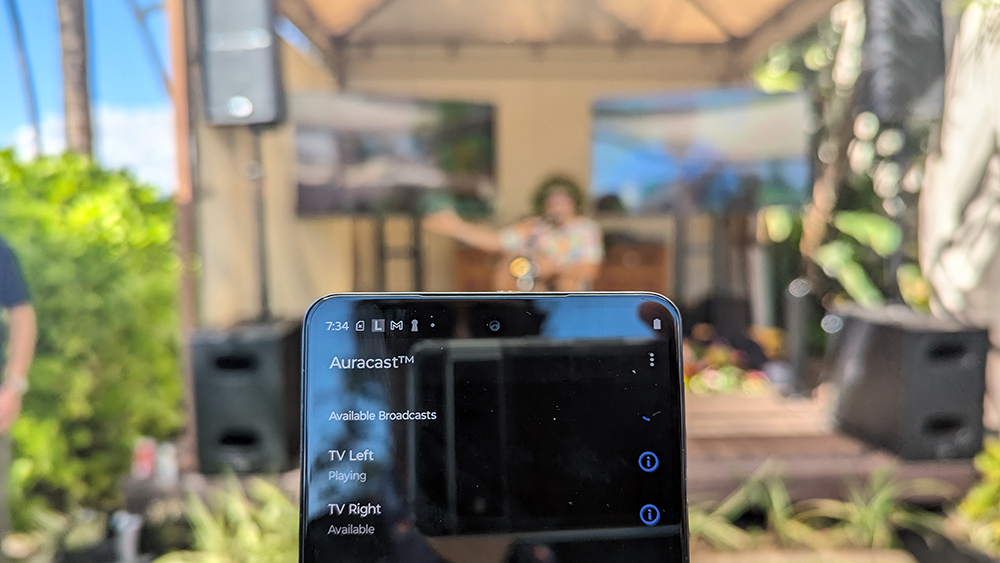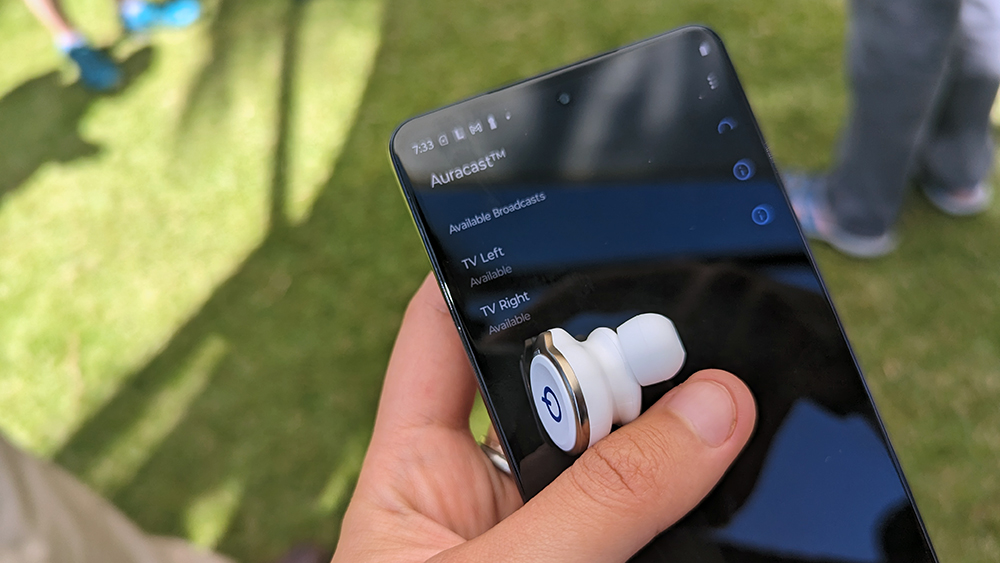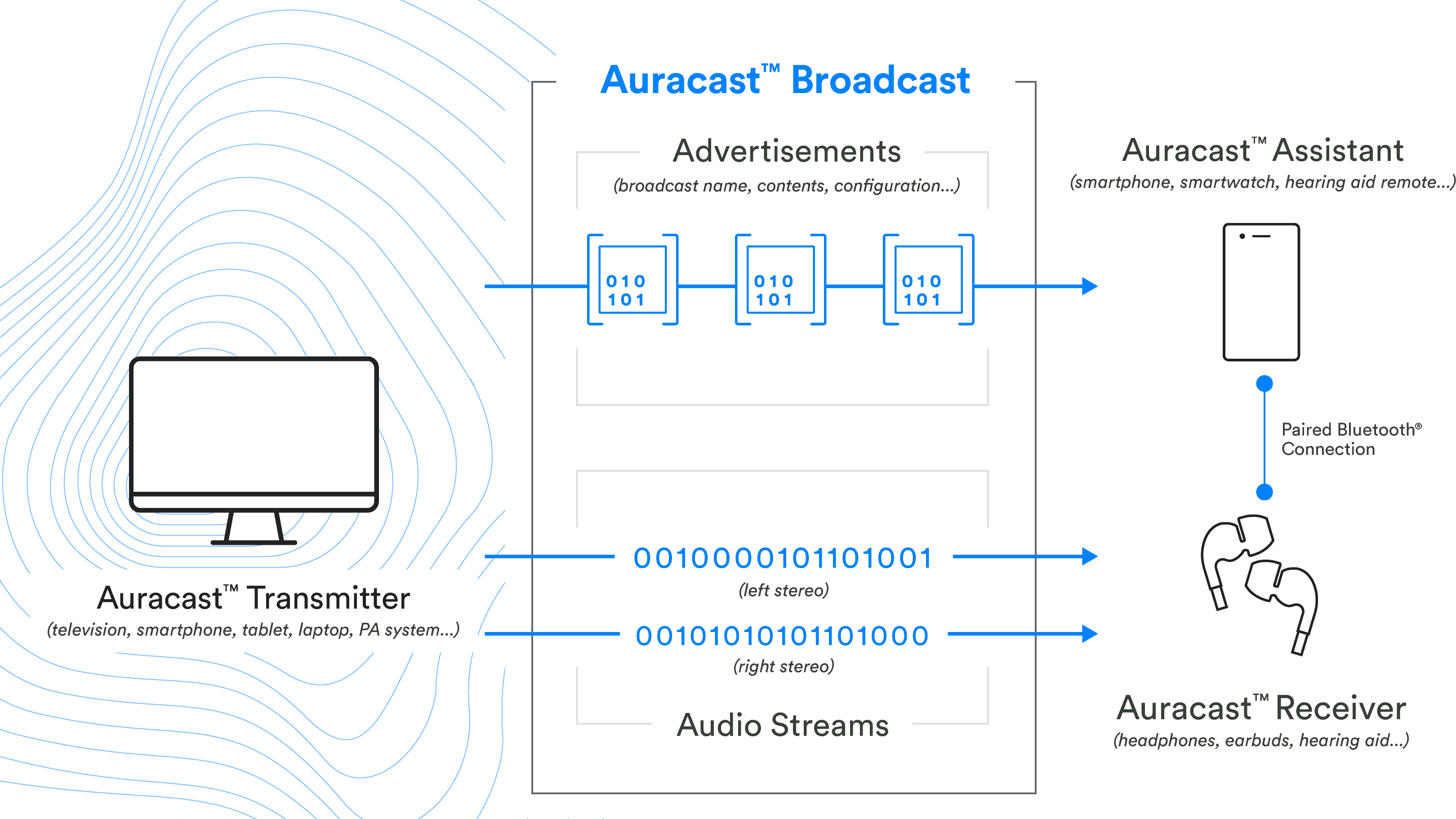I went ears-on with Auracast, an exciting Bluetooth feature set to revolutionise audio sharing
It could be a game-changer

Audio sharing has become a bit of a buzz term in the headphones space of late, as an increasing number of phones, tablets and headphones (including AirPods) have gained the ability to allow two pairs of wireless headphones to simultaneously receive music from one source device. Apple calls its version Audio Sharing, Samsung has Dual Audio, and so on. Indeed, audio sharing looks set to play an increasingly significant role in the portable audio market, with audio sharing in the extreme being brought in the near future by a Bluetooth technology called Auracast.
You can read everything you need to know about Auracast here, but essentially the coming-soon technology allows an infinite number of Bluetooth LE Audio-supporting headphones to 'tune into' and receive audio from compatible transmitter sources such as TVs or PA systems beaming out audio content, allowing people to choose which audio stream(s) they want their listening device to play back. So if, for example, an airport sports bar had four Auracast-featuring TVs playing different games, you could choose which one you wanted to hear commentary for through your Auracast-featuring headphones, and even switch between them. You could do a similar thing in, say, the gym or at a doctor's waiting room. Tours and exhibitions could offer multi-language audio streams so that you could simply pick the language you want and hear it through your own headphones. And it could allow hearing aid users to access assistive audio in public locations to hear, for example, train station announcements. Pretty cool, huh?
At the annual Snapdragon Summit hosted by Qualcomm, who helped define the Bluetooth LE Audio standard of which Auracast is a feature, I was finally able to see the audio-sharing technology in action...

Again, for Auracast to work you need both the source (transmitter) and headphones (receiver) to support LE Audio, the Bluetooth standard delivering it. Products supporting Bluetooth 5.2 (which introduced LE Audio) can support it with a software update, while all Bluetooth 5.3 devices will by default support LE Audio and Auracast. It's important to note that Auracast is an optional feature within LE Audio for manufacturers, so you'll want to check that a product supports it.
Compatible Auracast devices are currently thin on the ground – the Auracast section on Bluetooth.com flags 'Find a product' as 'coming soon'. On the source side are select 2023 Neo QLED 8K and Micro LED TVs and the Galaxy S23 and latest Fold phones from Samsung, as well as the Google Pixel 7, to give a few examples. And I imagine future plug-in Auracast transmitters will be a popular way of delivering the technology. Meanwhile, compatible headphones include the Samsung Galaxy Buds 2 Pro and Philips Fidelio L4 and Fidelio T2.
So I was given a compatible phone and an unspecified pair of earbuds. The phone was running an Auracast application for demo purposes, which simply listed the various 'available broadcasts' to tune into, as you can see in the photo above. (I believe the idea – and ideal – is that Auracast will be integrated into a device's OS user experience, like Bluetooth and wi-fi, though perhaps audio/service apps will be Auracast-'aware' too.) In front of me were two Auracast-supporting Samsung TVs side by side, each playing different content (of, if you must know, two different styles of ukelele and guitar – the summit is held in Hawaii).

Audio streams can be password-protected for more private broadcasts – that of a music playlist or movie with a handful of friends on a train, say – though these were open and accessible, as I imagine most in public spaces would be. So it was simply a case of selecting one TV or the other in the app, just as you would select a wi-fi network (scanning a QR code could also be a future gateway into broadcasts), and 'waiting' about two seconds for the audio channel to dutifully switch in the earbuds – pretty easy.
The latest hi-fi, home cinema and tech news, reviews, buying advice and deals, direct to your inbox.
I didn't walk around much but from where I stood the audio was clear and stable – important on both fronts. Here, only two broadcasts were available and about 15 people were tuning into each at once, however as Auracast is completely a one-way technology, a greater number of available broadcast channels and/or receivers tuning in shouldn't impact the experience.
Latency between audio and video could be a problem for use cases involving screens, but that didn't appear to be an issue here: as far as I could tell, during the slower strumming that was easier to track, there didn't seem to be any delay.
The Auracast demo worked just as I'd imagined it would when I first heard about the technology last year, providing a dead-simple way to tune your earbuds into different audio streams. It may be some time before Auracast is adopted and used on a meaningful level – fingers crossed it'll pick up steam in 2024 – but when it is it will no doubt revolutionise audio sharing.
MORE:
Wi-fi for headphones is great news for sound quality, so is it the death knell for Bluetooth?
The LG M3 and Dolby Atmos FlexConnect point to a wireless TV revolution – but it's too soon
What are the best Bluetooth codecs? aptX, AAC, LDAC and more explained

Becky is a hi-fi, AV and technology journalist, formerly the Managing Editor at What Hi-Fi? and Editor of Australian Hi-Fi and Audio Esoterica magazines. With over twelve years of journalism experience in the hi-fi industry, she has reviewed all manner of audio gear, from budget amplifiers to high-end speakers, and particularly specialises in headphones and head-fi devices.
In her spare time, Becky can often be found running, watching Liverpool FC and horror movies, and hunting for gluten-free cake.
